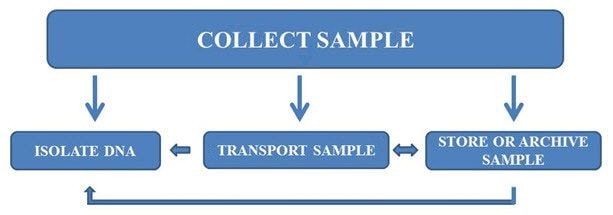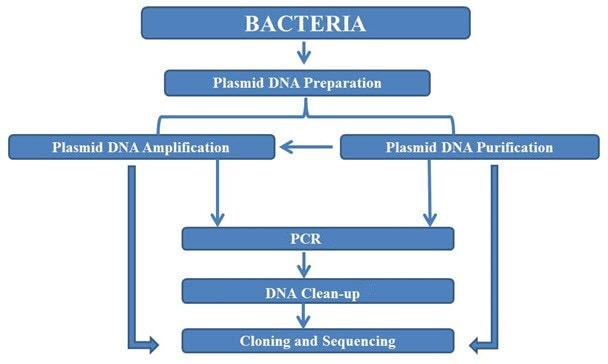Plasmid DNA Purification
Introduction to plasmid purification
Extraction of macromolecules such as DNA, RNA, and protein is common in molecular biology research. The process of extraction and purification of nucleic acids has evolved from being a complex and labor-intensive procedure. Current nucleic acid purification methods provide high sample outputs, purity, and scalability of biomolecules with minimum cross-contamination. Automated systems designed for medium-to-large laboratories are also commonly used.
Preparing nucleic acids for plasmid purification
Preparation of nucleic acids begins with the process of sample collection (bacteria, animal tissue and cells, or plant tissue). Samples must be collected and handled properly to achieve high-quality nucleic acid regardless of the method used for DNA preparation. The path from sample collection to nucleic acid purification may involve sample collection, transport, archiving, storage, and purification of nucleic acids as a workflow (Figure 1).

Figure 1. Workflow for sample collection, transport, archiving, and DNA purification.
Nucleic acid isolation
Isolation of DNA involves the lysis of cell membranes, removal of histone proteins, RNA, and lipids, and purification. Various methods available for extraction and purification are detailed in Table 1.
Plasmid DNA
Plasmids are small, circular, double-stranded DNA used in molecular biology for manipulating and decoding genetic information. They have evolved as key components in any cloning and biotechnological techniques as they are easier to manipulate.
Various methods have been developed for plasmid DNA purification. We are committed to bringing you Greener Alternative Products, which adhere to one or more of The 12 Principles of Greener Chemistry. The GenElute products have Inherently Safer Chemistry, compared to the standard use of phenol and chloroform to perform DNA extractions.
Our GenElute™ Plasmid Miniprep Kit is a simple, rapid, and cost-effective method for isolating plasmid DNA from E. coli cultures. The kit combines silica-based membrane technology and the convenience of a spin column format, and recovers up to 20 mg of high copy plasmid DNA per mL of overnight culture. The following are the main steps (Figure 2) in the isolation and purification of plasmid DNA using GenElute™ Plasmid Miniprep Kit.
- Bacterial cells are harvested via centrifugation, subjected to a modified alkaline-SDS lysis procedure, and the DNA adsorbed onto silica in the presence of high salts.
- Contaminants are then removed by a simple wash step.
- The bound DNA is eluted in water or Tris-EDTA buffer. The recovered plasmid DNA is predominately in its supercoiled form.
- The DNA is ready for use in applications such as restriction enzyme digestion, cloning, PCR, transformation, transcription, conventional and automated sequencing
Some of our plasmid DNA purification kits are tabulated in Table 2. Detailed explanation of the different plasmid DNA purification methods (PDF).

Figure 2.Workflow for nucleic acid preparation and purification from plasmids. PCR DNA clean-up: product numbers NA1020 and PCR9604
References
続きを確認するには、ログインするか、新規登録が必要です。
アカウントをお持ちではありませんか?